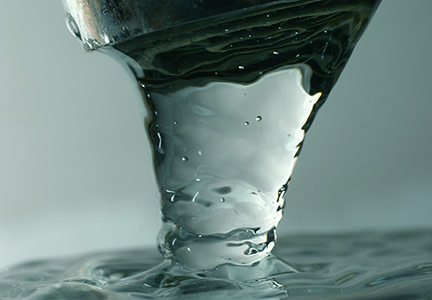Share
Related Topics
Tagged As
EPA regulates public water systems; it does not have the authority to regulate private wells. Approximately 15 percent of Americans rely on their own private drinking water supplies (Drinking Water from Household Wells, 2002), and these supplies are not subject to EPA standards. Unlike public drinking water systems serving many people, they do not have experts regularly checking the water’s source and its quality before it is sent to the tap. These households must take special precautions to ensure the protection and maintenance of their drinking water supplies.
We do not strictly control Google ad content. If you believe any Google ad is inappropriate, please email us directly here.

Drinking Water from Household Wells is an EPA publication available to specifically address special concerns of a private drinking water supply. To learn more, or to obtain a copy, visit www.epa.gov/safewater/privatewells.
How Much Risk Can I Expect?
The risk of having problems depends on how good your well is—how well it was built and located, and how well you maintain it. It also depends on your local environment. That includes the quality of the aquifer from which your water is drawn and the human activities going on in your area that can affect your well.
Several sources of pollution are easy to spot by sight, taste, or smell. However, many serious problems can be found only by testing your water. Knowing the possible threats in your area will help you decide the kind of tests you may need.
What Should I Do?
There are six basic steps you can take to help protect your private drinking water supply:
1. Identify potential problem sources.
2. Talk with local experts.
3. Have your water tested periodically.
4. Have the test results interpreted and explained clearly.
5. Set and follow a regular maintenance schedule for your well, and keep up-to-date records.
6. Immediately remedy any problems.
Identify Potential Problem Sources
Understanding and spotting possible pollution sources is the first step to safeguarding your drinking water. If your drinking water comes from a well, you may also have a septic system. Septic systems and other on-site wastewater disposal systems are major potential sources of contamination of private water supplies if they are poorly maintained or located improperly, or if they are used for disposal of toxic chemicals.
Talk With Local Experts
Ground water conditions vary greatly from place to place, and local experts can give you the best information about your drinking water supply. Some examples are your health department’s “sanitarian,” local water-well contractors, public water system officials, county extension agents of the Natural Resources Conservation Service (NRCS), local or county planning commissions, and your local library.
Have Your Water Tested Periodically
Test your water every year for total coliform bacteria, nitrates, total dissolved solids, and pH levels. If you suspect other contaminants, test for these as well.
As the tests can be expensive, limit them to possible problems specific to your situation. Local experts can help you identify these contaminants. You should also test your water after replacing or repairing any part of the system, or if you notice any change in your water’s look, taste, or smell.
Often, county health departments perform tests for bacteria and nitrates. For other substances, health departments, environmental offices, or county governments should have a list of state-certified laboratories. Your State Laboratory Certification Officer can also provide you with this list. Call the Safe Drinking Water Hotline for the name and number of your state’s certification officer. Any laboratory you use should be certified to do drinking water testing.
Have Your Test Results Interpreted And Explained Clearly
Compare your well’s test results to federal and state drinking water standards (visit www.epa.gov/safewater/mcl.html). You may need to consult experts to aid you in understanding your results, such as the state agency that licenses water well contractors, your local health department, or your state’s drinking water program.
HHI Error Correction Policy
HHI is committed to accuracy of content and correcting information that is incomplete or inaccurate. With our broad scope of coverage of healthful indoor environments, and desire to rapidly publish info to benefit the community, mistakes are inevitable. HHI has established an error correction policy to welcome corrections or enhancements to our information. Please help us improve the quality of our content by contacting allen@healthyhouseinstitute.com with corrections or suggestions for improvement. Each contact will receive a respectful reply.
The Healthy House Institute (HHI), a for-profit educational LLC, provides the information on HealthyHouseInstitute.com as a free service to the public. The intent is to disseminate accurate, verified and science-based information on creating healthy home environments.
While an effort is made to ensure the quality of the content and credibility of sources listed on this site, HHI provides no warranty - expressed or implied - and assumes no legal liability for the accuracy, completeness, or usefulness of any information, product or process disclosed on or in conjunction with the site. The views and opinions of the authors or originators expressed herein do not necessarily state or reflect those of HHI: its principals, executives, Board members, advisors or affiliates.
 Access to certified instructors, training programs, and more.
Access to certified instructors, training programs, and more.







